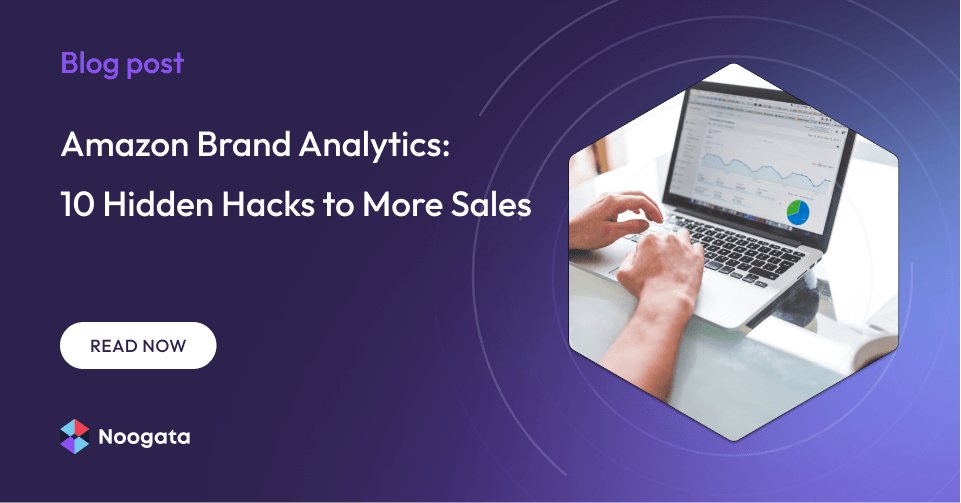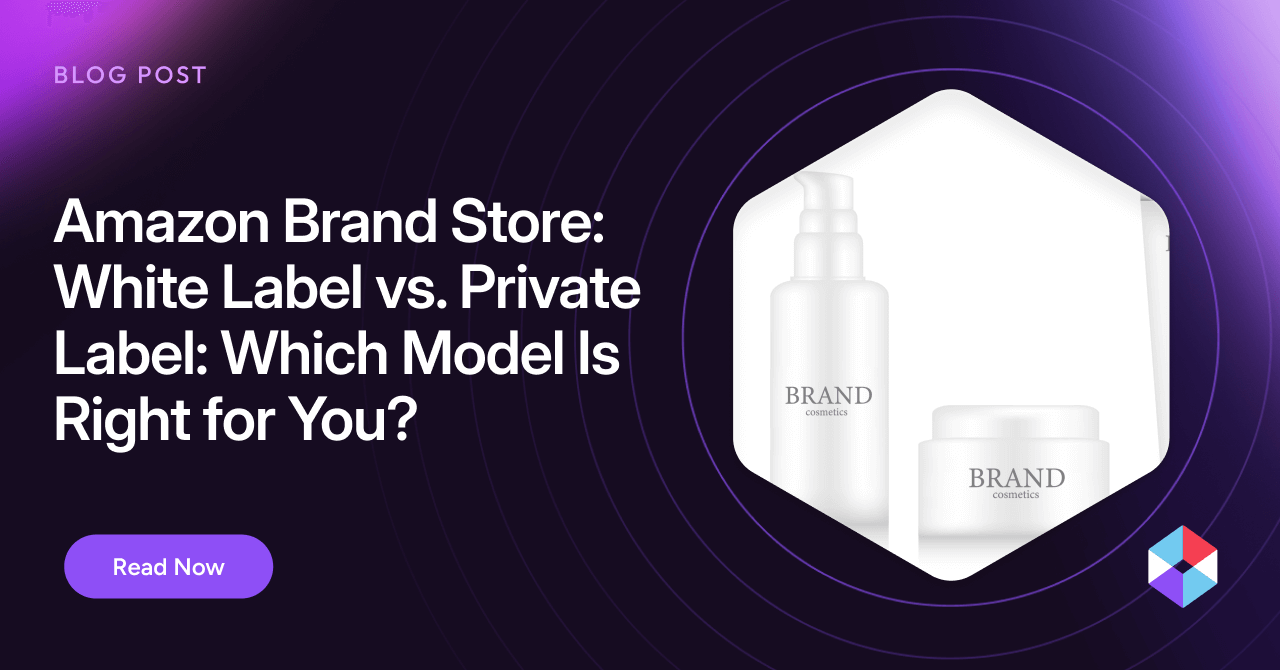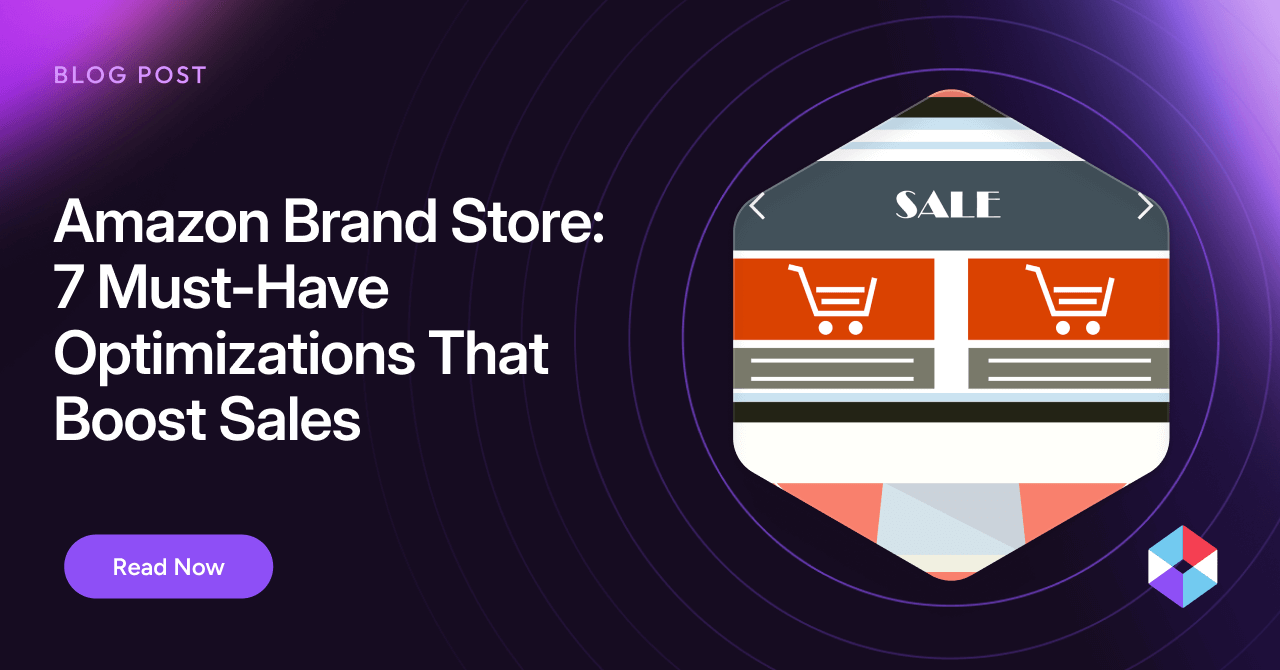Consumers are creatures of habit. Given the near-infinite options of global eCommerce, most prefer to fall back on the sites they already know and trust. That’s why there’s so much lucrative potential in being an Amazon Seller. Consumers can easily find your brand and products on the world’s biggest online marketplace, the site where they have already come to shop for nearly everything imaginable.
The catch is that all your competitors have figured this out too. There are more than 2 million third-party sellers on Amazon, each fighting to stand out in the search results and end up in the shopping cart. Amazon’s sales figures went up 9% in the first quarter of 2023, indicating that there’s no better time for merchants to stake out their territory. But you must be innovative in a crowded marketplace like Amazon to beat the competition.
When it comes to getting ahead in eCommerce, one of the best ways to be innovative is to use advanced data analytics. For merchants with registered brands, Amazon provides a free tool called Amazon Brand Analytics that offers detailed reporting on customer behavior, search terms, ad performance, and more.
By taking advantage of the insights from Amazon Brand Analytics, merchants can outmaneuver their competitors and unlock the secrets to higher sales. This post will show you how to do it.
What is Amazon Brand Analytics (ABA), and why is it important?
Amazon Brand Analytics is a free tool that Amazon provides to registered brands. It provides detailed reporting about popular search terms, customer demographics and behavior, and performance metrics.
The information in Amazon Brand Analytics can give you helpful insights into your Amazon sales strategy, ad campaigns, product listing pages, competitors, and up-and-coming consumer trends. Because the data comes directly from Amazon’s internals, you can trust its accuracy.
How to Use Amazon Brand Analytics
Only brands that are part of the Amazon Brand Registry Program can use Amazon Brand Analytics. To qualify for this free program, you need to be the owner of a brand with a registered (or pending) trademark that appears on your products or packaging.
Once registered, you can access Brand Analytics from the “Reports” tab in Seller Central. You can then use the information you find there to improve your position on the digital shelf, outsell your competitors, and increase your market share.
Amazon Brand Analytics is constantly updating, so it pays to review it weekly to look for ways to incorporate its insights into your Amazon sales strategy.
The Benefits of Amazon Brand Analytics
Amazon Brand Analytics provides valuable information about search terms, competing products, and your sales performance. Every product category has its unique marketing concerns that Amazon Brand Analytics won’t necessarily account for, so it won’t completely eliminate the need for robust third-party analytics.
However, there are plenty of benefits you can get from this free tool, including the ability to:
- See how customers are using Amazon search terms to find your products
- Find out how your product listings stack up against your competitors
- Choose better keywords for your ad campaigns
- Understand your target audience on a deeper level
- Get ideas for improving your product listing pages
- Optimize your overall marketing and sales strategy on Amazon
Amazon Brand Analytics Reports and How to Hack Them for More Sales
Several different reports are available under Amazon Brand Analytics, and you can leverage all of them to increase your sales. Let’s break it down, report by report:
Amazon Search Terms Report
Winning the digital shelf is about maximizing your visibility to your target audience. On Amazon, that means ensuring that your listings come up when consumers search for the products you’re selling. This report ranks the most popular search terms by volume (although it doesn’t tell you the actual volume) and provides the click and conversion percentages for the top three products associated with each search term.
HACK #1 – Identify your priority pay-per-click keywords
When deciding how much to bid on keywords for a PPC campaign, you don’t want to limit yourself to paying top dollar for the most obvious choices. Consumers don’t always follow the most predictable path, and this report can help you uncover underutilized keywords with solid potential.
HACK #2 – Compare your market share
Look at the conversions for a particular search term and see how many you’re getting relative to your competitors. If your percentage is low, it might be a good idea to work on improving your product titles and images.
HACK #3 – Find new product opportunities
You can do market research by exporting a list of high-volume search terms and searching for keywords relevant to your brand. You may find instances where there are search terms with high demand and low supply.
Demographics Report
Pull up this ABA report to discover the age, household income, education level, gender, and marital status of your Amazon buyers. It also provides information about the total number of customers and unique buyers, order volume, sales totals, and units sold.
HACK #4: Improve your audience segmentation
If all or most of your sales go through Amazon, you might not have a better method of getting an accurate breakdown of your target audience demographics. This report can give you a clear picture of what types of people are actually interested in buying from you, allowing you to make smarter decisions about defining your audience segments.
Item Comparison and Alternate Purchase Behavior Reports
These reports tell you the top five products customers look at after clicking on your product, along with the top five products they end up purchasing.
HACK #5: Launch a product targeting campaign
Amazon Ads allows you to target audiences based on the categories or individual products they’re viewing. The products identified by these reports are an excellent choice for this type of ad campaign because you already know there’s a significant degree of overlapping interest.
Market Basket Analysis Report
You can use this report to find out what other products customers are purchasing at the same time they’re buying your products. It expresses this association as a percentage calculated by dividing the number of orders containing both products by the number of total orders.
HACK #6 – Get ideas for complementary products
If you see that customers frequently buy accessories and complementary items from other brands alongside your products, that’s a strong indicator that you can boost sales by marketing those items under your own brand.
HACK #7 – Create bundled product deals
When customers are in the habit of buying two or more of your products at the same time, you can boost sales and increase customer loyalty by offering discounted product bundles.
Repeat Purchase Behavior Report
Some products are once-in-a-lifetime purchases, while others get reordered every week. This report will tell you exactly which of your products are ending up in the same customers’ shopping carts on a recurring basis.
HACK #8 – Launch a retargeting campaign
Following up on customers who’ve interacted with your brand by retargeting them with relevant ads can be a highly effective way to drive conversions. For products with a solid track record of repurchases, it makes sense to retarget customers who have already bought them at least once.
HACK #9 – Offer the Subscribe and Save option
Your most frequently repurchased products are great candidates for Amazon’s Subscribe and Save option, which lets customers save money by setting up automatic reorders.
Amazon Brand Dashboard
ABA offers a dashboard view for search queries and catalog performance. Here, you can see important metrics for all the products you sell and learn more about how customers engage with your listings. The Brand Dashboard can also highlight product pages lacking positive reviews, detailed content, and other essential elements.
HACK #10 – Optimize product listings across the board
The Brand Dashboard will tell you at a glance which of your product pages are incomplete, suboptimal, or contributing to a negative impression of your brand. By reviewing the Brand Dashboard regularly, you can bring all of your pages up to a similar level of quality and make smarter choices about when to discontinue certain offerings.
Amazon Analytics is Just the Beginning
For qualifying sellers, Amazon Brand Analytics can be a powerful tool that provides actionable insights regarding your products, performance, and competition. Every report has the potential to show you ways you can optimize your strategy and generate higher sales. By following these ten hacks, you’ll be on your way to increasing your Amazon sales and revenue.
If you want to take your sales growth on Amazon to the next level, combine the data from Amazon Brand Analytics with Noogata’s AI-powered competitive intelligence and Amazon assistance.
Book a free demo to see how you can use Noogata to conquer the digital shelf, anticipate new eCommerce trends, boost your advertising ROI, and outperform the competition.










